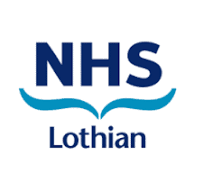Patient Resources
NHS Lothian MSK Self Help Resources Webpage
Definition
Tennis elbow is a soft tissue problem that causes pain and tenderness at the lateral elbow. It is a tendinopathy of the common extensor origin.
Golfer’s elbow causes pain and tenderness at the medial elbow. It is a tendinopathy affecting the common flexor origin.
Typical signs and symptoms
Tennis elbow:
- Localised tenderness on palpation over the lateral epicondyle or surrounding area.
- Elbow and wrist joint active and passive range of movement is usually preserved.
- Pain +/- weakness on resisted wrist extension and/or middle finger extension.
- Grip strength may be reduced due to pain.
Golfer’s elbow:
- Localised tenderness on palpation over the medial epicondyle or surrounding area.
- Elbow and wrist joint active and passive range of movement is usually preserved.
- Pain +/- weakness on resisted wrist flexion and/or pronation.
- Grip strength may be reduced due to pain.
Prevalence and risk factors
- Tennis elbow is more common than golfer’s elbow.
- Male = female; typically aged 35-54 years.
- Risk factors include: activities, sports or manual occupations that involve loading, repetitive movement or gripping; certain medical conditions and metabolic factors (e.g. high cholesterol, inflammatory conditions, diabetes, obesity), lack of quality sleep, stress, long term and excessive alcohol intake, smoking, genetics, diet and nutrition.
Prognosis/ risks factors for poor outcomes
Tennis elbow and golfer’s elbow are generally self-limiting conditions, and spontaneously improve in about 80–90% of people over 1–2 years.
Risks for poorer outcomes include: higher pain severity and disability at baseline, longer pain duration, multi-site pain, previous pain episodes, anxiety and/or depression, adverse coping strategies, low social support, poor self-efficacy, low expectations of recovery, contributing factors that affect tendon quality e.g. lifestyle - smoking, alcohol, physical activity levels; diabetes, inflammatory conditions, high cholesterol, obesity; occupational stress.
Other considerations
Most cases of tennis elbow and golfer’s elbow resolve spontaneously.
Steroid injections are not recommended; they can help with short-term pain relief however, they can weaken tendons. Research has shown that after one year, people who have had an injection for tennis elbow tend to be worse off than those who have not.
Relevant standards and guidelines
NICE Clinical Knowledge Summaries: Tennis elbow
BESS: Patient Care Pathways and Guidelines
